This article from AdWeek is putting mobile, the small screen, front and center where it belongs. See below why mobile should be highly considered over other alternatives.
After early struggles, the small screen may ultimately emerge as the winner
 Photo: Getty Images
Photo: Getty Images
For years, mobile was seen as a slick sideshow—the possibilities of engaging people on a platform that commands, even consumes their attention has always held great promise but also appeared doomed to disappoint. Neither the marketing nor the metrics were ready for prime time—remarkable considering how much most of us live on our devices. But as native, programmatic and location-based ads continue to roll out, could mobile advertising be poised to overtake other media?
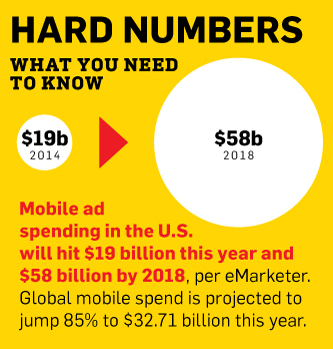
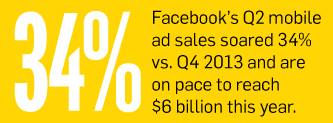 While some industry insiders scoff at the suggestion that TV will ever take a backseat to smartphones and tablets, there are others who are quite bullish.
While some industry insiders scoff at the suggestion that TV will ever take a backseat to smartphones and tablets, there are others who are quite bullish.
“Mobile will eventually become the predominant screen,” predicted Bob Dorfman, creative director at Baker Street Advertising in San Francisco. “I’d say within 10 years.”
The turnaround appears to be well underway, in fact.
Mobile sales figures at both Facebook and Twitter are soaring, with each enjoying double-digit gains per quarter. Meanwhile, the process of advertising on mobile devices may have just gotten easier. Facebook today will introduce Atlas, which is designed to help marketers track campaigns across smartphones, tablets and desktops. Also this week, Nielsen is expected to pitch the TV networks a measurement tool that will pair mobile views with TV ratings. Google is also set to debut rich media ads for mobile.
But even as change is in the air, not everyone believes marketers are moving fast enough to keep up.
“If all everybody is doing is iterating on last year’s plan, you’re only making five-degree changes here and there,” said Sarah Hofstetter, CEO of digital shop 360i. “It goes back to budgeting.”
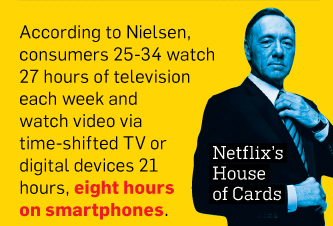
Hofstetter was able to convince client Red Roof Inn to invest in mobile video ads in recent months. Those ads did so well for the hotel chain that it boosted its fourth-quarter mobile spend by 25 percent.
“In 2012, the thinking was, ‘Maybe I need to start paying attention to mobile,’” said Red Roof Inn digital director Kevin Scholl. “Last year, it was, ‘Maybe I need to have a stronger focus on this.’ And then in 2014, it is, ‘This absolutely has to be a larger part of our strategy.’”
All the while, the ratings of the Big Four broadcast networks continue to erode. And for the first time ever, cable and satellite subscriptions last year declined versus the year prior, per research firm IHS. To say that the TV business is troubled is to deal in hard truths, of course, and yesterday’s news.
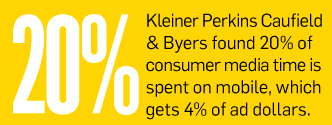
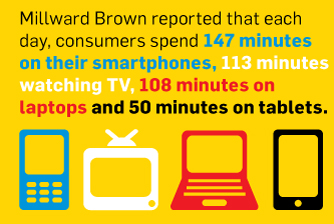
“There’s a big acceleration of millennials expecting content on demand and optimized for any device,” pointed out research guru Jason Dorsey, who specializes in Gen Y. “It would be naïve to say that TV doesn’t reach them, but when looking at how they take in entertainment and information via mobile devices, TV is not where it is at.”
ESPN, which dominates so much of DVR-proof live sports programming, appears on the winning side, however. This past April, the cable net revealed that the majority of consumers of its digital video content tuned in via smartphones and tablets, reaching a peak of 57 percent in August. As a result, ESPN is working to enhance high-def mobile viewing to service consumers and advertisers.
“We are going to ask ad agencies to ensure that creative has the ability to be delivered at maximum scope on all screens,” said Zach Chapman, ESPN vp, global digital sales. “Nine times out of 10, consumers don’t have the luxury of being in front of a 72-inch screen.”
Those smaller screens seem to suit consumers just fine—something more agencies and brands are finally waking up to. As YP (formerly Yellow Pages) SVP of national markets Luke Edson put it, “Publishers, agencies and brands will shift to mobile. They have to.”
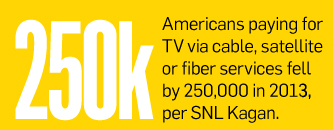
Meanwhile, David Hewitt, vp, mobile at Boston digital agency SapientNitro, anticipates a time when the business will be as focused on connected cars and appliances as on the mobile screen as we know it. “In essence,” he said, “it is mobility that is the future of advertising.”
Original article found here

